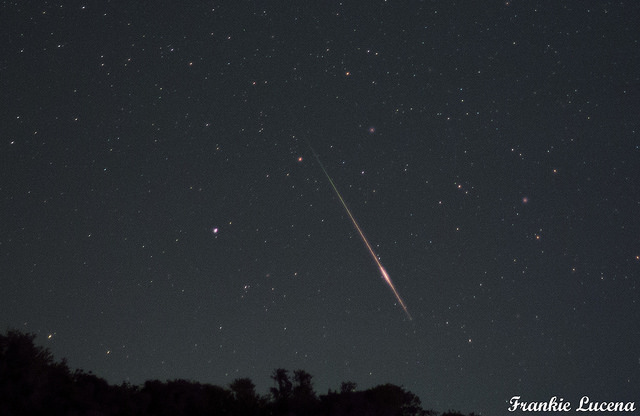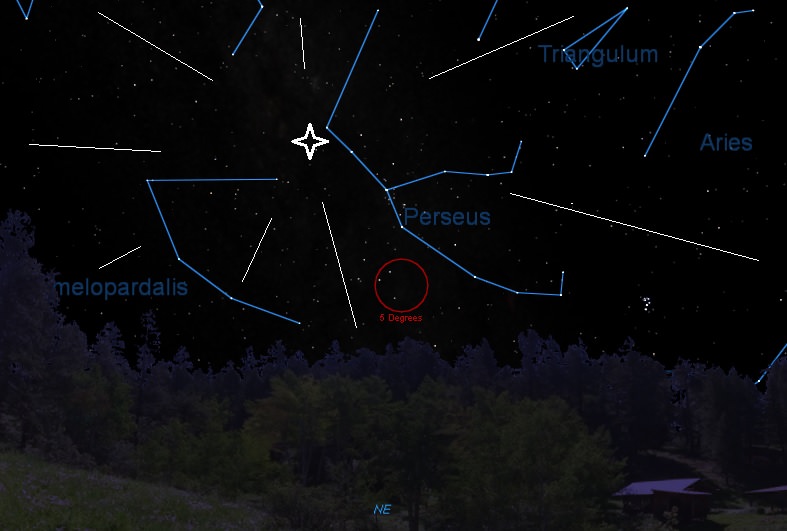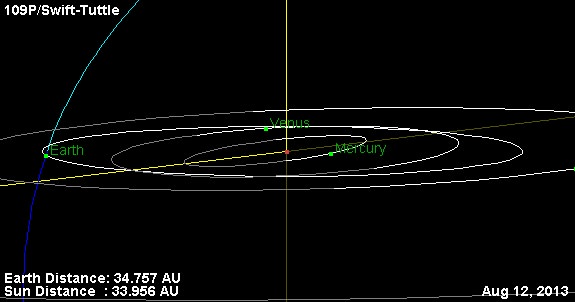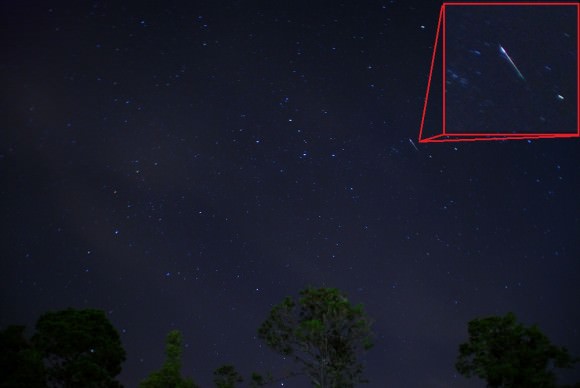Out camping under the August sky? The coming week gives us a good reason to stay up late, as the Perseid meteor shower graces the summer sky. An ‘old faithful’ of annual meteor showers, the Perseids are always sure to produce.
The 2016 Perseids present a few challenges, though persistent observers should still see a descent show. The Perseids are typically active from July 17th to August 24th, with the peak arriving this year right around 13:00 to 15:30 Universal Time on Friday, August 12th. This will place the radiant for the Perseids high in the sky after local midnight for observers in the northern Pacific, though observers worldwide should be vigilant over the next week. Meteor showers don’t read predictions and prognostications, and an arrival of the peak just a few hours early would place North America in the cross-hairs this coming Friday. The Perseids typically produce an average Zenithal Hourly Rate of 60-200 per hour, and the International Meteor Organization predicts a ZHR of 150 for 2016.
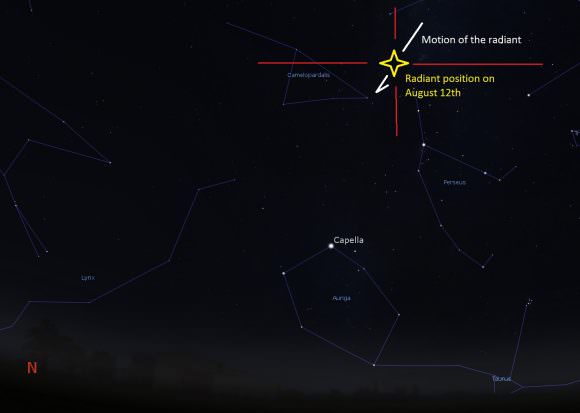
The nemesis of the 2016 is the Moon, which reaches Full on August 18th, six days after the shower’s peak. The time to start watching this shower is now, before the waxing Moon becomes a factor. The farther north you are, the earlier the Moon sets this week:
Moonset on the evening of August 11/12th:
Latitude versus Moonset ( in local daylight saving time)
20 degrees north – 1:30 AM
30 degrees north – 1:14 AM
40 degrees north – 0:56 AM
50 degrees north – 0:30 AM
Early morning is almost always the best time to watch any meteor shower, as the Earth-bound observer faces in to the meteor stream head on. The December Geminids only recently surpassed the Perseids in annual intensity in the past few years.
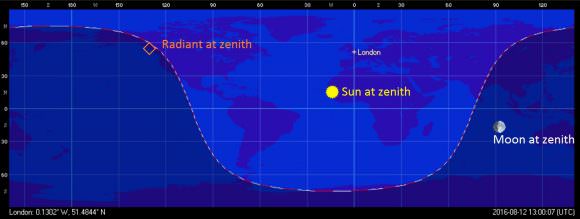
The radiant of the Perseids drifts through the constellations of Cassiopeia, Perseus and Camelopardalis from late July to mid-August. The Perseids could just as easily have received the tongue-twisting moniker of the ‘Cassiopeiaids’ or the ‘August Camelopardalids.’ The source of the Perseids is comet Comet 109P/Swift-Tuttle discovered by Lewis Swift and Horace Tuttle in 1862. Comet Swift-Tuttle reached perihelion on 1992, and visits the inner solar system once again in 2126.
The Perseids are also sometimes referred as the “Tears of Saint Lawrence” who was martyred on a hot grid iron on August 10th, 258 AD.
The Perseids have been especially active in recent decades, following the perihelion passage of Comet Swift-Tuttle. Meteor showers come and go. For example, the Andromedids were a shower of epic storm proportions until the late 19th century. We have records of the Perseids back to 36AD, but on some (hopefully) far off date, the debris path of Comet Swift-Tuttle will fail to intersect the Earth’s orbit annually, and the Perseids will become a distant memory. During previous years, the Perseids exhibited a peak of ZHR= 95 (2015), 68 (2014), 110 (2013), 121 (2012) and 58 (2011). Keep in mind, the Perseids have also sometimes displayed a twin peak during previous years, as well.
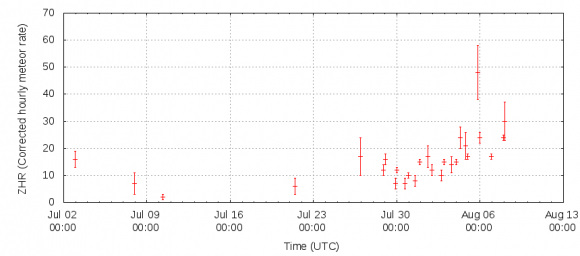
Observing the Perseids
The best instrument to observe the Perseids with is a pair of old fashioned, ‘Mk-1 eyeballs.’ Simply lay back, warm drink in hand, and watch. Remember, the quoted ZHR is an ideal rate that we all strive for, though there are strategies to maximize your chances of catching a meteor. Watching early in the morning when the radiant rides highest (around sunrise in the case of the Perseids), seeking out dark skies, and enlisting a friend to watch in an opposite direction can raise your hourly meteor count.
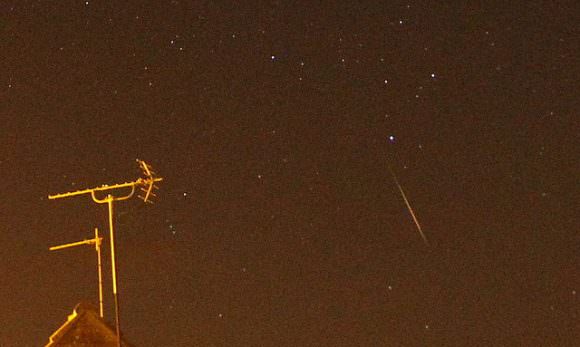
Keep a pair of binoculars handy to examine any persistent glowing trains and lingering smoke trails from bright fireballs. Monitoring the FM band for the pings of accompanying radio meteors can add another dimension to an observation session. The ionized trail of a meteor can very occasionally reflect the signal of a distant radio station, bringing it through clear for a few seconds before fading out.
@Astroguyz I wasn’t aiming for #Perseid images, wanted to grab Milky Way shots and it sneaked into one of the frames pic.twitter.com/BuGE8xrsVH
— irv (@irvb) August 9, 2016
Also, keep an ear out for an even stranger phenomenon, as bright meteors are sometimes accompanied by a hissing or crackling sound. Long thought to be a psychological phenomenon, a team of Japanese astronomers managed to catch recordings of this strange effect during the 1988 Perseid meteors.
Imaging meteors is also pretty straight forward. Simply tripod mount a DSLR with a wide field lens, take some test exposures of the sky to get the ISO, f-stop and exposure combination just right, and begin taking exposures 30 seconds to five minutes long. An intervalometer can automate the process, freeing you up to kick back and watch the show.
Got science? Be sure to send those meteor counts into the International Meteor Organization (IMO) and watch their live updated graph as the shower progresses.
Also, be sure to tweet those meteor sightings to #Meteorwatch.

